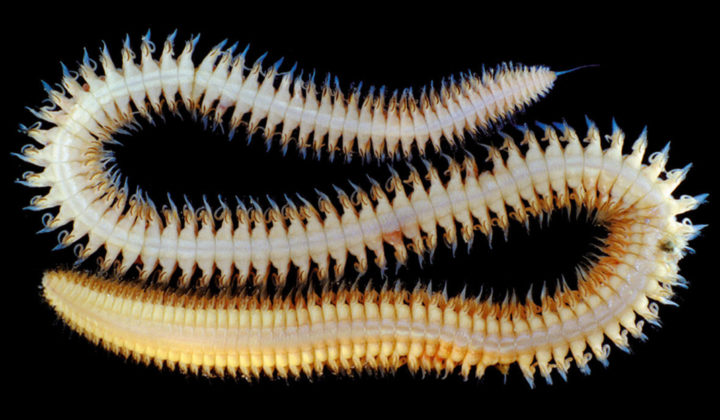
Bristle Worms – Colorful inhabitants of the Sea
Special exhibition in room 209 of the Senckenberg Museum from 9th November 2000 to 25th February 2001 (extended to 15th March 2001)
Bristle worms (Polychaeta) belong to the phylum Annelida (annulated worms) together with the earth worms and leeches. The oldest fossil records of bristle worms date back to the middle Cambrian (520 to 500 million years ago). Thus they not only belong to one of the oldest but with currently more than 10.000 known species also to one of the most diverse animal groups.
Bristle worms live almost exclusively in marine habitats; only very few species occur in freshwater or humid terrestrial habitats. Since they are found in high numbers and diversity in almost all marine habitats, they represent an important element of the marine food web, especially as food for fish and other invertebrates.
Often bristle worms like many other invertebrates, e.g. spiders and snails, are considered repugnant animals, detested by many people. The reason for this attitude, however, is often a lack of familiarity due to the small size of the worms and the unaccessibility of their habitats. Moreover, their colors fade in preservation fluids leaving these animals less attractive to the observer.
This special exhibition points out the beauty and esthetical aspects of bristle worms by using special illumination of specimens, many color photographs of live specimens and colorful illustrations from early literature.
Additionally artwork of the French group of artists MINITEXTIL’ART are shown, together with worm-installations of the German artist RUNWALT.
Following presentation in the Senckenberg Museum this exhibition was also shown in various other natural history museums,
- the Zoological Museum of the University of Hamburg (26 April – 15 July 2001),
- the Naturmusée Luxembourg (20 September – 11 November 2001),
- and the Meeresmuseum Stralsund (7 March – 20 Mai 2002).
Publications:
Barnich, R. & Fiege, D. (2000): Borstenwürmer. Schillernde Bewohner der Meere. Kleine Senckenberg-Reihe Nr. 37. 64 S.



